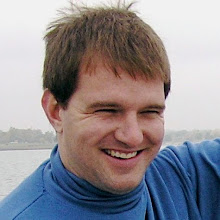When is the last time you made a map on a computer?
If you are in the field of geographic information systems (GIS), you use a computer to make maps every day. In fact, up until recently, GIS users constituted the majority of people in the world who had 1) sufficient technical skills and 2) access to software which allowed them to create maps of our world using computers. GIS has long played a critical role in community planning and natural resource management, and has more recently taken off in the fields of marketing and disaster mitigation (to name just a few).
 |
| A GIS map of unfragmented lands in Hampton, NH |
Even if you are not a GIS user, can you still make a map?
Definitely. The world of computer mapping has changed dramatically over the past few years, and many new technologies have emerged which make the creation and sharing of maps more straightforward and much less expensive. Instead of software that takes years to master, and thousands of dollars to purchase, anyone can make maps on their computers using largely free, often fairly simple, software and websites. If you want to learn more about how to make your own maps, UNH Cooperative Extension provides opportunities to improve your mapping skills by taking a workshop or by taking time to learn on your own.
Google map of Dog poop in the school yard in Nashua, NH
GIS and other computer-based mapping is used by scientists in a wide variety of disciplines to store their data, analyze their research and present results to scientists and non-scientist alike. Maps are great ways to communicate, providing both a visual way for people to understand scientific data and a geographic context in which people can begin to understand how results relate to their corner of the world. While poorly-designed maps can be found far and wide, well-designed maps can both beautifully summarize an entire research project and, at the exact same time, serve as the catalyst for a entirely new study. If a simple picture is worth a thousand words, just imagine how many words it would take to replace a good map. The right map at the right time can change the world.
 |
| GIS map of lake chlorophyll concentrations from Shane Bradt's dissertation research |
How are NH EPSCoR scientists using maps?
The NH EPSCoR Ecosystems and Society Project is a comprehensive, researched-based effort to better understand the interaction between land use, climate, ecosystems and society. From the moose-filled bogs of Coös County to the eelgrass beds of Great Bay, a tremendous amount of data are being collected on range of natural resources including forests, soil, rivers and snowpack. Advanced GIS mapping is used throughout the Ecosystems and Society Project by scientists to share and analyze results. In the near future, user-friendly interactive online maps will be released through the project's Data Discovery Center to allow anyone to explore and access results from several of the project's most interesting research topics.
How do I learn more?
For starters, keep following this blog! Check back often to hear the latest from our researchers. You can also use the NHEPSCoR website, Facebook page and Twitter feed to keep up with the latest news on how scientists are using maps to gain new understanding of the importance of NH's natural resources.
Posted by Shane Bradt, Extension Specialist in Geospatial Technologies,
UNH Cooperative Extension

No comments:
Post a Comment